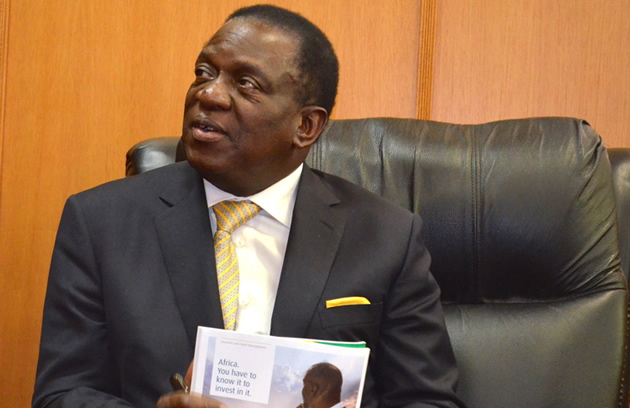Where are the Chevrons going?

CAPE TOWN. — Where are Zimbabwe going? It looks like a path, is shaped like one — but then again it doesn’t, and isn’t. They are a Test nation who played no Tests in 2015. They are a Full Member but will need to qualify for global tournaments in the future.
Zimbabwe continue to tread the liminal space between cricket’s haves and have-nots, neither here nor there, betwixt and between, part of cricket’s society but never fully integrated anywhere.
It’s an odd space to be in, and national coach Dav Whatmore — who began his tenure at the beginning of January — soon struck upon one of its symptoms when he suggested that Zimbabwe have the hardware to succeed but their software needs upgrading.
That phrase quickly became a sort of mantra of his, and through it Whatmore continued to suggest that it is the mental side of the game that Zimbabwe most need to work on.
Symptomatically, Zimbabwe were able to put themselves in winning positions in nearly every series they played, but struggled to land the killer blow.
They bossed sessions of play throughout their World Cup campaign but slipped onto the wrong sides of marginal calls, such as Chris Gayle’s first-ball lbw shout before his monumental 215 in Canberra, or John Mooney’s opinion-dividing boundary catch in Hobart.
They also struggled horribly at the death with both bat and ball, coming away with just one win, over UAE.
They also lost their best batsman of the last decade after the tournament, Brendan Taylor, signing off with two sparkling hundreds against Ireland and India before leaving Zimbabwe for the security of a county contract with Nottinghamshire.
Taylor’s talent was priceless and irreplaceable for Zimbabwe, and his departure reverberated through the rest of the year.
Without Taylor, Zimbabwe won hearts and minds on their historic tour of Pakistan in May, but no matches, despite their plucky dedication.
The worthy successes against India, New Zealand and Pakistan at home were counterbalanced by the almosts and what-ifs from those same series.
Pleasingly for the home fans, Zimbabwe held their grip on a couple of close games against Ireland in October, but they could not find it within themselves to match Afghanistan’s blossoming self-belief, conceding both the one-day and T20 series to the visitors.
There has been a real sense through 2015 that the era that began after the apocalyptic “rebel” saga is now at an end.
The core of Zimbabwe’s squad has been in a state of flux since Taylor left in March, and for varying reasons, Zimbabwe shed senior players of the calibre of Vusi Sibanda, Prosper Utseya, Tendai Chatara and Hamilton Masakadza this year. Chatara will be back once his left leg, fractured in two places in April, heals, and Masakadza may yet plot a route back to the national side, but once he gets there he will find the dynamic much changed.
Luke Jongwe, Wellington Masakadza, Tendai Chisoro, Brian Chari and Neville Madziva offer a vision of Zimbabwe’s future, and the new crop is likely to be joined soon by the likes of Peter Moor and Ryan Burl as well.
Neither Zimbabwe’s new faces nor their seasoned veterans did awfully well in Bangladesh at the end of the year, and that tour confirmed just how far Zimbabwe have been outstripped by competitors they used to see as equals.
Somewhat remarkably, Zimbabwe actually won the final T20 to break a 13-match losing streak against Bangladesh, Madziva’s miraculous last-over conversion doing the trick, snatching a win from the jaws of defeat.
Perhaps that software upgrade so desired by Whatmore is finally coming to pass.
Yet if Zimbabwe are slowly finding the gumption to leap over hurdles on the field, they still face trials off it.
The ugliness of Mark Vermeulen’s racist outburst on Facebook, which resulted in his being banned from all cricket in October, the virtual collapse of the dysfunctional player association, and Utseya’s accusations of racism against Alistair Campbell in his letter to the Zimbabwe Cricket board in May suggest that the seeds of crisis are not buried so deep that they might not sprout up once more in 2016.
The ousting of chairman Wilson Manase in August, and Campbell’s frustrated resignation in October lent an unsettled feel to the administration, capping a year of change.
It was also a busy year. Zimbabwe played almost twice as many internationals this year as they did in 2014, with 40 matches to last year’s 23, but even with more games, life on cricket’s margins will get no easier.
Though the incoming crop of players have brought with them a renewed freshness and hunger to succeed, this year showed more often than not that the jump from Zimbabwean domestic cricket to the international arena remains a huge one.
Zimbabwe should be assured of plenty of game time in 2016, with a limited-overs tour of Bangladesh, followed by the World T20 and home series against India, New Zealand and Sri Lanka to look forward to.
But Test cricket clearly is no longer the primary focus, and their share of the ICC’s Test Match Fund will far more likely be used to underwrite loss-making limited-overs tours, which have become the new norm. — Cricinfo.








Comments